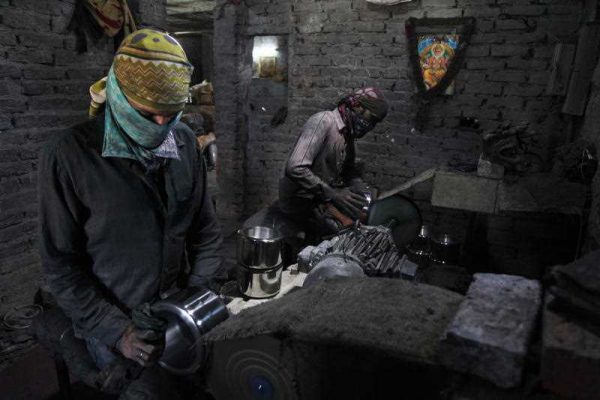India’s labour laws are restrictive in nature and hurt investments in the manufacturing sector. They discourage firms from introducing new technology that might require retrenching workers. The Industrial Disputes Act (1947) has rigid provisions that require compulsory and prior government approval in the case of layoffs, retrenchment and closure of industrial establishments employing more than 100 workers. This clause applies even when there is a good reason to shut shop, or worker productivity is seriously low.
The Contract Labour (Regulation and Abolition) Act (1970) states that if the job content or the nature of work of an employee or group of employees needs to be changed, 21 days’ notice must be given. While not particularly restrictive at face value, in practice, the changes also require the consent of the employees, and this can be tricky. While the right of workers to associate is important, the Trade Union Act (1926) allows outsiders to be office bearers of trade unions. This sometimes results in strikes and lockouts initiated by outsiders, rather than because of any genuine grievance of the employees. This hurts investor confidence in the process and restricts economic growth, resulting, in turn, in a lack of jobs and unemployment.
In response to current, restrictive labour laws, the Indian cabinet has proposed amendments, have already been tabled in India’s Parliament.
To provide flexibility to managers and employers, the amendment to the Factories Act (1948), approved by cabinet on 24 October 2014, includes doubling the provision of overtime from 50 hours a quarter to 100 hours in some cases, and from 75 hours to 125 hours in work of public interest. Worker productivity is low in India, and each task takes longer than it should, so an increase in working hours will help companies produce higher output. The norms of female participation have been relaxed in certain industry segments. But while productivity issues should be addressed in part by bringing in quality FDI, it is important to also prevent worker exploitation by enforcing maximum-hour protection. A reduction in the number of days that an employee needs to work to be eligible for benefits like leave with pay — from 240 to 90 — is an important step.
Amendments to the Labour Laws Act (1988) will let companies hire more employees without having to fulfil burdensome requirements. The finance minister under the new regime is encouraging states to make appropriate labour reforms. Reforms will make it easier for firms to adopt hire-and-fire policies. Similar reforms in China aimed at attracting FDI in manufacturing and creating jobs provide a good model: in 1999, China’s Labour Law explicitly granted foreign firms the right to hire and fire based on merit alone.
The state government of Rajasthan has gone the Chinese way and made numerous labour reforms. Now, industrial establishments that employ up to 300 people can retrench employees without the government’s permission. To reduce bureaucratic delays, the Factories Act now applies to firms that employ 20 workers in electricity-powered factories, raised from 10, or 40 workers in factories without power, raised from 20. Finally, to stop productivity losses from politically motivated strikes, a union must now show membership of 30 per cent of the total workforce to be recognised (up from 15 per cent).
The Modi government is focusing on the manufacturing sector to create employment opportunities for millions of young Indians and to improve growth. Policymakers understand that labour laws must be made flexible to boost large-scale manufacturing. On 16 October 2014, Modi announced two key labour reforms: the ‘unified labour and industrial portal’ and ‘labour inspection scheme’. The objective criteria and transparent process for labour inspection under these schemes should be a relief for industry. Even more so for small-to-medium enterprises, which can suffer from the arbitrary use of the labour rules by inspectors. The introduction of Labour Identification Number (LIN) and putting inspection on unified portal will go a long way in bringing transparency in the use of labour rules. Modi’s efforts to raise the minimum wage ceiling from 6500 rupees (US$105.97) to 15000 (US$244.53) rupees and to ensure vulnerable groups receive payments from the Employees Provident Fund, are small but important steps.
Modi’s cabinet has taken a big first step at the central level towards labour market reform — one of the most complicated and debated issues in the post-reform era. But much more will need to be done in the future to attract foreign investment. India’s labour system will need to balance the needs of both employers and employees in creating an environment for productive employment with reasonable safety nets. This will be no easy task.
Pravakar Sahoo is Associate Professor at the Institute of Economic Growth (IEG), Delhi University.

